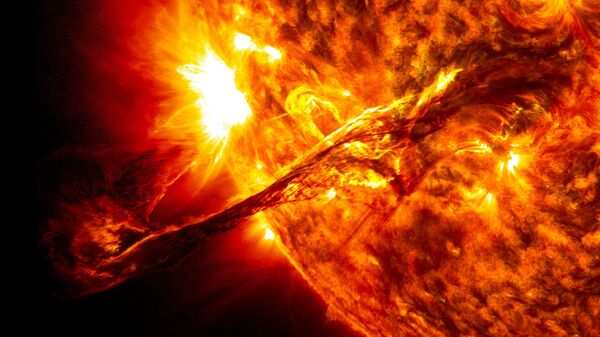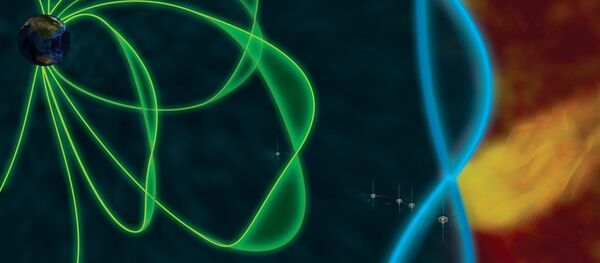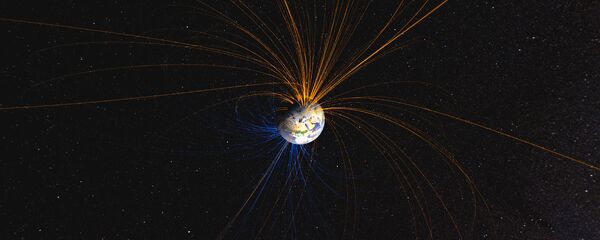A stream of solar wind emanating from a canyon-shaped hole in the Sun's atmosphere is set to hit Earth's magnetic field on Thursday, Sun-Earth environment monitoring news site SpaceWeather.com has reported.
According to the monitors, the burst of solar energy, traveling at speeds of over 420 km per second, is expected to hit the planet's magnetic field today, resulting in minor geomagnetic storms and auroras mixed with unusually bright moonlight, observable by Arctic sky watchers.
The eruptions of magnetic energy from the Sun's surface, known as solar storms, occur when a disturbance on the Sun emanates outward across our solar system, spewing hot gases out into space. Such events periodically target Earth, causing small geomagnetic disturbances, and occasionally burning out electrical and communications equipment, scrambling radars, and even shutting down entire power grids. The increased amount of radiation during these has also been suspected of leading to higher incidence of cancer.
Earlier this month, officials from the US National Oceanic & Atmospheric Administration and the British Geological Survey revealed that the position of the magnetic north pole was moving faster than usual from the Canadian Arctic toward Russia's Siberia, prompting scientists to speculate on what would happen if a sudden pole reversal were to take place in the near future.
However, even conventional solar storms in normal conditions have the potential to be devastating when they're large enough. In 1859, a big solar storm shorted telegraph wires and sparked random fires across North America and Europe. A similar storm in 1967 caused a blackout of US military surveillance equipment in the Arctic, prompting the Pentagon to scramble for nuclear war. In 1989, a geomagnetic storm caused a nine-hour outage of Hydro-Quebec's electricity transmission system, while affecting HF radio communications worldwide.
A second storm that same year resulted in a halt in all trading on the Toronto Stock Exchange.




